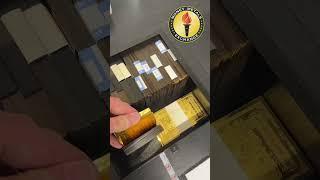| When and where the next avalanche will happen is hard to predict. In a special cold laboratory in Davos, researchers simulate the effects of wind on fresh snow to better understand the mechanisms that trigger avalanches. For centuries, avalanches have posed a threat to mountain farmers and their livestock. With the development of winter tourism, roads, railways and hydropower plants, the interest in avalanche research and protective measures has grown. The origins of the WSL Institute for Snow and Avalanche Research SLF date back to 1936, when a small group of researchers moved into a snow lab on the Weissfluhjoch summit above Davos. Today the institute monitors the conditions of avalanches throughout Switzerland, investigates the effects of climate change on snow cover and operates the national avalanche warning service. Researchers at the SLF study how snow is built up and how it changes under various conditions, how avalanches occur and how they move over the terrain. In this episode of "Exploring Science in Davos" we take you inside the institute’s cold chambers. This podcast is an audio version of the SWI swissinfo.ch video series with the same title. Find out more about science research in Switzerland on www.swissinfo.ch/science (https://www.swissinfo.ch/eng/topic/science/44685954) Hosted by: Jo Fahy Journalist: Sara Ibrahim (https://www.swissinfo.ch/eng/author/sara-ibrahim/46196978) Journalist/Sound: Michele Andina (https://www.swissinfo.ch/eng/author/michele-andina/42390972) Please sign up for our Free newsletter on Swiss Democracy. SWI swissinfo.ch is a public service media company based in Bern Switzerland. It publishes independent news and information in 10 languages about Switzerland for a global audience. |
Tags: Featured










































